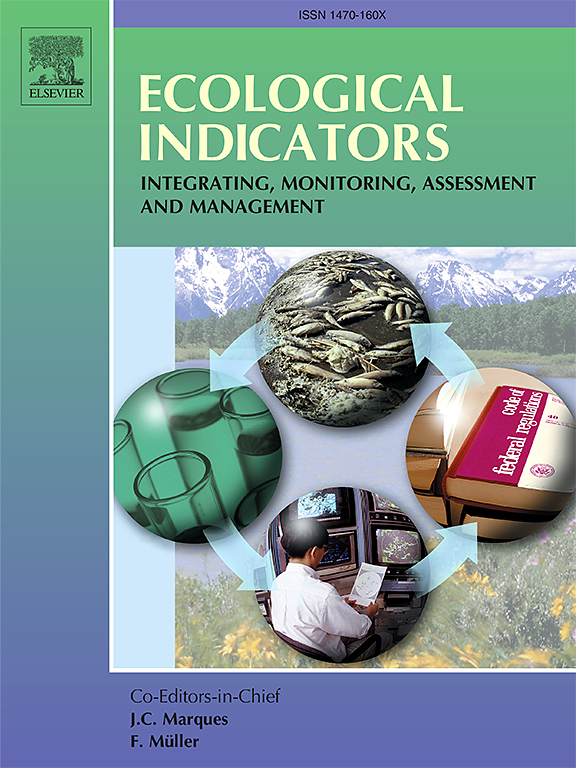Integrating ecosystem service spillovers and environmental justice in ecological compensation: A pathway to effective ecological protection in China
IF 7
2区 环境科学与生态学
Q1 ENVIRONMENTAL SCIENCES
引用次数: 0
Abstract
Ecological compensation is an important policy tool for promoting ecological protection and regional coordination. However, heated debates persist concerning the theoretical foundations, compensation standards, methodologies, and funding channels. Built on the theories of ecosystem service spillovers and environmental justice, this study proposes a framework for ecological compensation. Areas where ecosystem services exceed the regional average are defined as spillover zones and thus designated as compensation zones, and accordingly, the standards are determined by the discrepancies in ecosystem service values between the compensation zone and the region. The coastal area of Jiangsu Province was selected as a typical case study. The study reveals that the total ecological compensation area is approximately 3,977.92 km2, with Tier I and Tier II compensation zones accounting for 22.24 % and 77.76 % of the total compensation area, with the compensation standards being RMB364,300 per km2 and RMB218,600 per km2, respectively. Government special funds could only cover 54.60 % of the required compensation. We propose to establish and improve ecological compensation mechanisms based on key ecological function areas, set up a provincial special ecological compensation fund, and establish market-driven compensation mechanisms. The approach proposed in this study is highly operational and applicable to land-based ecological compensation schemes.

生态补偿中生态服务溢出与环境正义的整合:一条中国有效生态保护之路
生态补偿是促进生态保护和区域协调的重要政策工具。然而,在理论基础、补偿标准、方法、资助渠道等方面,仍存在激烈的争论。基于生态系统服务溢出理论和环境正义理论,本文提出了生态补偿框架。将生态系统服务功能超过区域平均水平的区域定义为外溢区,并划分为补偿区,补偿区生态系统服务功能值与区域生态系统服务功能值的差异决定补偿标准。选取江苏沿海地区作为典型案例进行研究。研究结果表明,总体生态补偿面积约为397.92 km2,其中一级和二级补偿面积分别占补偿面积的22.24%和77.76%,补偿标准分别为36.43万元/ km2和21.86万元/ km2。政府专项资金只能支付所需赔偿的54.60%。建立健全基于重点生态功能区的生态补偿机制,设立省级生态补偿专项基金,建立市场化补偿机制。本研究提出的方法可操作性强,适用于陆上生态补偿方案。
本文章由计算机程序翻译,如有差异,请以英文原文为准。
求助全文
约1分钟内获得全文
求助全文
来源期刊

Ecological Indicators
环境科学-环境科学
CiteScore
11.80
自引率
8.70%
发文量
1163
审稿时长
78 days
期刊介绍:
The ultimate aim of Ecological Indicators is to integrate the monitoring and assessment of ecological and environmental indicators with management practices. The journal provides a forum for the discussion of the applied scientific development and review of traditional indicator approaches as well as for theoretical, modelling and quantitative applications such as index development. Research into the following areas will be published.
• All aspects of ecological and environmental indicators and indices.
• New indicators, and new approaches and methods for indicator development, testing and use.
• Development and modelling of indices, e.g. application of indicator suites across multiple scales and resources.
• Analysis and research of resource, system- and scale-specific indicators.
• Methods for integration of social and other valuation metrics for the production of scientifically rigorous and politically-relevant assessments using indicator-based monitoring and assessment programs.
• How research indicators can be transformed into direct application for management purposes.
• Broader assessment objectives and methods, e.g. biodiversity, biological integrity, and sustainability, through the use of indicators.
• Resource-specific indicators such as landscape, agroecosystems, forests, wetlands, etc.
 求助内容:
求助内容: 应助结果提醒方式:
应助结果提醒方式:


